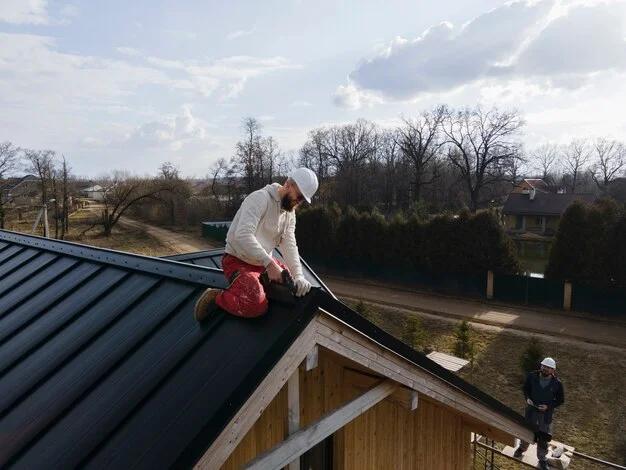When roof repairs are delayed, the consequences can be far-reaching and financially burdensome. Homeowners often underestimate the long-term impact of a neglected roof, assuming that a small leak or minor damage won’t lead to significant problems. However, putting off necessary repairs can quickly escalate into serious issues, increasing costs and causing unnecessary damage to the home. We will explore more the hidden costs of delaying roof repairs, including the risk of structural damage, increased energy bills, safety hazards, and the long-term financial burden of neglect. Understanding these costs can help homeowners make informed roof maintenance and repair decisions.
Risk of Structural Damage
One of the most serious consequences of delaying roof repairs is the risk of structural damage. A small issue, such as a leaking roof, might seem harmless at first, but over time, water intrusion can weaken the underlying structure of your home. Water can seep into walls, ceilings, and the attic, compromising insulation, framing, and other critical structural components. As moisture accumulates, it can cause wood to rot, metal to rust, and drywall to weaken. The damage might go unnoticed for months or even years until the structure becomes unstable, requiring costly repairs or even reconstruction. Addressing roof issues early on helps to preserve the integrity of the home’s framework and ensures that your house remains safe and secure.
Increased Energy Costs
Delaying roof repairs can also lead to a significant increase in energy bills. Roofs play a critical role in maintaining the temperature inside your home, keeping it cool in summer and warm in winter. When your roof is damaged or compromised, the insulation may be affected, allowing air to escape or enter the home. This forces your heating and cooling systems to work harder to maintain a comfortable temperature, increasing energy consumption and utility costs. Over time, these additional expenses can add to a substantial financial burden. Early roof repairs can help preserve the efficiency of your home’s insulation and ensure that energy costs remain manageable.
Mold and Mildew Growth
Another hidden cost of delaying roof repairs is mold and mildew growth potential. When water leaks into the home through a damaged roof, it creates a damp environment ideal for mold and mildew to thrive. These fungi cause unpleasant odors and can lead to health problems, especially for individuals with respiratory issues or allergies. Mold can spread quickly, damaging walls, furniture, carpets, and other personal belongings. The cost of removing mold and treating the affected areas can be substantial; in some cases, it may require professional intervention. Also, mold remediation can be a lengthy and expensive process, often involving replacing materials that are beyond repair. By addressing roof repairs promptly, homeowners can prevent mold growth and protect their health and property.
Decreased Property Value
Delaying roof repairs can negatively affect the value of your property. A well-maintained roof is one of the key factors potential buyers look for when evaluating a home. If a roof is in disrepair, it can deter potential buyers and lower the property’s perceived value. This can make it harder to sell the home or require the seller to lower the asking price to attract buyers. In extreme cases, a poor-quality roof may even prevent a sale altogether. Moreover, if repairs are deferred for too long, the damage may become so extensive that it’s difficult or impossible to recover the costs of repairs when selling the home. Homeowners can protect their investment and ensure their property retains its value by taking care of roof issues early on.
Insurance Complications
Delaying roof repairs can also lead to complications with home insurance. Most homeowners’ insurance policies cover roof damage caused by storms, accidents, or other unexpected events. However, if the damage is due to neglect or lack of maintenance, your insurance provider may refuse to cover the costs of repairs or replacements. Insurance companies typically require homeowners to maintain their property in good condition, and failing to do so may result in claims being denied. In addition, if the roof damage is severe enough to require a full replacement, the homeowner may be forced to cover the entire cost out of pocket. Regular roof maintenance and timely repairs are essential for ensuring that your insurance policy remains valid and that you are covered in an emergency.
Safety Hazards
Delaying roof repairs can create significant safety hazards. A damaged roof can pose a risk to both the occupants of the home and anyone in the surrounding area. For instance, broken shingles or a sagging roof can fall off and cause injury to people or pets. In addition, if the roof’s structure becomes compromised, there is a risk of collapse, which could lead to catastrophic damage or harm. Water that enters the home through a leaky roof can also pose electrical risks, potentially causing short circuits or fires. By addressing roof problems quickly, homeowners can minimize the likelihood of these hazards and ensure the safety of their household and visitors.
Delaying roof repairs can lead to hidden costs beyond the immediate expense of fixing a damaged roof. The risk of structural damage, increased energy bills, mold growth, and decreased property value are just a few of the financial consequences of neglecting roof maintenance. Furthermore, safety hazards, insurance complications, and long-term financial burdens can result from putting off necessary repairs. By addressing roof issues early on, homeowners can avoid these hidden costs and protect their homes, health, and financial well-being. Regular roof inspections and prompt repairs are an investment that pays off in the long run, ensuring that your home remains safe, comfortable, and valuable for years to come.
ALSO READ: Simple Yet Elegant Touches for a Sophisticated Home Makeover







